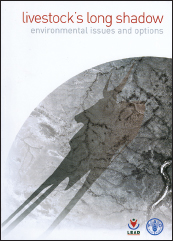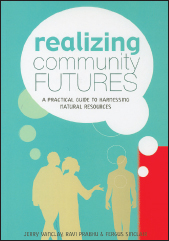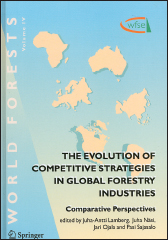 |
Floods in Bangladesh: history, dynamics and rethinking the role of the Himalayas. T. Hofer & B. Messerli. 2006. Tokyo, Japan, New York, USA & Paris, France, United Nations University Press & FAO. ISBN 92-808-1121-5.
Is it really true that deforestation and the land-use practices of Himalayan farmers are to blame for the monsoon floods that repeatedly devastate the plains of Bangladesh? A detailed analysis of historical rainfall and discharge patterns, sediment transport and deposition, and flooding intensities debunks this myth – implicating instead heavy rainfall, high groundwater tables and spring tides, lateral river embankments and the disappearance of natural water storage areas in the lowlands.
The floodplain of the Brahmaputra and Ganga rivers is a key food-crop production area, and accordingly has a high population density, growing urbanization and industrialization and high investment in infrastructure. The dilemma of increasing intensity of land use on the one hand, and susceptibility to floods on the other, has become increasingly serious there. Flooding has long been a regular occurrence in the floodplains, but since the 1950s the annual variation in flooding has increased and the large floods have become larger. In previous studies the increased variability and intensity were commonly attributed to human-induced degradation and deforestation in mountain areas. However, the authors of this publication suspected that this conclusion reflected a misinterpretation of the facts.
Floods in Bangladesh, the outcome of a research project carried out jointly by United Nations University, the Swiss Agency for Development and Cooperation, the Institute of Geography of the University of Bern, Switzerland and FAO, examined the highland-lowland linkages in more detail, tracing data back to the eighteenth century and basing their conclusions on 12 years of research on Himalayan ecology. They conclude that while mountain-dwellers have a responsibility to manage and use the environment sustainably, they are not necessarily to blame for flood catastrophes.
Since the 1990s, devastating floods have occurred in China, India, the United States and many European countries. The final chapter extends the lessons of this research to other river basins, addressing emerging issues of flood management and research priorities. Indeed, the authors deliberately avoid making site-specific recommendations, preferring to address the large-scale dimension of flooding.
The publication will therefore be of interest well beyond South Asia – not only to hydrologists and engineers, but also to development authorities, policy-makers, journalists and those interested in development issues in general.
Livestock’s long shadow: environmental issues and options. H. Steinfeld, P. Gerber, T. Wassenaar, V. Castel, M. Rosales & C. de Haan. 2006. Rome, FAO. ISBN 92-5-105571-7.
“Livestock’s contribution to environmental problems is on a massive scale, and its potential contribution to their solution is equally large.” This is the central premise of this comprehensive study, prepared under FAO’s Livestock, Environment and Development (LEAD) initiative.
The book examines livestock’s role in climate change, air pollution, water depletion and pollution, and biodiversity. In particular, they examine “environmental pressure points” such as the expansion of livestock into natural ecosystems and the need to reduce the environmental impact of intensive feed-crop production. The authors acknowledge that conversion of forests to make space for more livestock is a major cause of deforestation.
In addition to pointing out the problems caused by livestock rearing, the authors suggest a number of solutions. They discuss policy options in reference to climate change, water and biodiversity.
The authors conclude that considerable attention is being paid to the economic dimensions of livestock, but relatively little attention is focused on the environmental impacts. They suggest that improved institutional mechanisms are needed to address these concerns.
This book is intended to raise the awareness of both the technical and the general public, and is essential reading for policy-makers in sectors such as agriculture, environment, forestry and land-use planning. It can be used to assist decision-making at all levels from local to global, from private to public, from individual to corporate and from non-governmental to intergovernmental.
 |
Forest quality –assessing forests at a landscape scale. N. Dudley, R. Schlaepfer, W. Jackson, J.-P. Jeanrenaud & S. Stolton. 2006. London, UK & Sterling, Virginia, USA, Earthscan. ISBN 1-84407-278-9.
Forests are an important resource binding many aspects of human lives. In the present century it is not only deforestation that is a major environmental concern, but also the quality of forest – as not only the extent but also the nature of forest is changing.
Forest quality – assessing forests at a landscape scale looks at forest quality in terms of the values of all ecological and economic components in the forest landscape. It proposes a novel framework for quality assessment that can be tailored to individual needs and a range of outputs.
The book offers an array of concepts, methods, case studies and illustrations. It is divided into three parts: measuring forest quality, criteria of forest quality, and specific case studies in Europe, Asia, Africa and Latin America.
The authors identify quality criteria in three groups – authenticity, environmental benefits and socio-economic benefits – and identify many possible indicators for each group.
The framework could serve many uses:
This book will be particularly useful for professionals in field forestry and resource assessment, management and conservation. However, the approach could also be applied for assessment of other natural and cultural resources.
 |
Realizing community futures – a practical guide to harnessing natural resources. J. Vanclay, R. Prabhu & F. Sinclair. 2006. London, UK & Sterling, Virginia, USA, Earthscan. ISBN 1-84407-383-1.
Participation is not simply a technique or approach to be applied at different stages of the project cycle; it is also a philosophy about how development work is approached and implemented to attain the goals of sustainable development.
This is the guiding principle of Realizing community futures, which aims to foster structured learning and participatory modelling for natural resource management. The book talks not only about models, but about successful experiences that can be a guide to communities.
Both theory and practice are introduced in clear, simple language. The authors advocate an approach involving these basic steps: recognize the potential; agree on a common problem; share a vision; make the vision explicit; substantiate assumptions; explore options and implications; and implement what has been learned.
The practice of the approach is highlighted through three successful case studies involving structured learning.
The studies highlight the intimate relation between people and natural resources and illustrate how participatory approaches have provided solutions to socio-economic disparity and environmental concerns. The authors propose that their approach would be adaptable to all situations.
The book will be of interest to professionals and communities involved in natural resource management.
 |
The evolution of competitive strategies in global forestry industries: comparative perspectives. J.-A. Lamberg, J. Näsi, J. Ojala & P. Sajasalo, eds. 2006. Dordrecht, the Netherlands, Springer. ISBN 1-4020-4015-6.
Competition in the pulp and paper industry is intense. The evolution of competitive strategies in global forestry industries: comparative perspectives examines the rise and fall of companies in light of their competititive strategies, including the aggressive actions that some companies have taken in order to succeed.
The first section introduces the themes of industry evolution, competitive dynamics and path dependence, in addition to a more focused look at the pulp and paper industry itself.
The second part presents case studies of the performance and strategies of large North American and Nordic companies as well as smaller family-owned firms. The similarities and differences are examined, with differences in national contexts and cultures taken into account.
The third part of the book is devoted to the evolution of competition in the industry, including the changing roles of information, managerial cognition and organizational motivation.
The concluding comparisons and discussions point out that the changes seen over the past century in the aggressive and competitive nature of the industry have been small. Meanwhile success in the market remains transient.
Uniting contributions from experts in industrial management, economic history, strategic marketing, industrial engineering and institutional theory, this book should be of equal interest to both academic and business-oriented readers. As a study of the strategic undertakings of competitors within an industry, its findings may also be of interest beyond the forestry industry.
 |
Ginseng, the divine root. D.A. Taylor. 2006. Chapel Hill, North Carolina, USA, Algonquin Books. ISBN 1-56512-401-4.
Can a root be so powerful as to change the destiny of the world? According to the author of Ginseng, the divine root, the answer is yes.
Ginseng is mainly grown around forests in China, the Korea Peninsula and Siberia in the Russian Federation, as well as in the eastern United States. Its use goes back 70 million years. Recognized for its medicinal virtues, ginseng has been used as a tonic and as a cure for a vast range of ailments from ancient times to the present. This publication gives a detailed description of its history, highlighting its impact on human cultures. It depicts the illegal trade, the legends and the rise and fall of kingdoms associated with it, as well as the experiences of the explorers, diggers, stealers and traders who sought to make their fortunes with it.
The author in the process uncovers ancient practices and traditions, international crimes and medical lore associated with the “root of life”.
While the book will clearly appeal to individuals with a specific interest in non-wood forest products, it offers stimulating reading for all audiences – perhaps especially for those who sample the ginseng-based recipes provided in the appendix.
 |